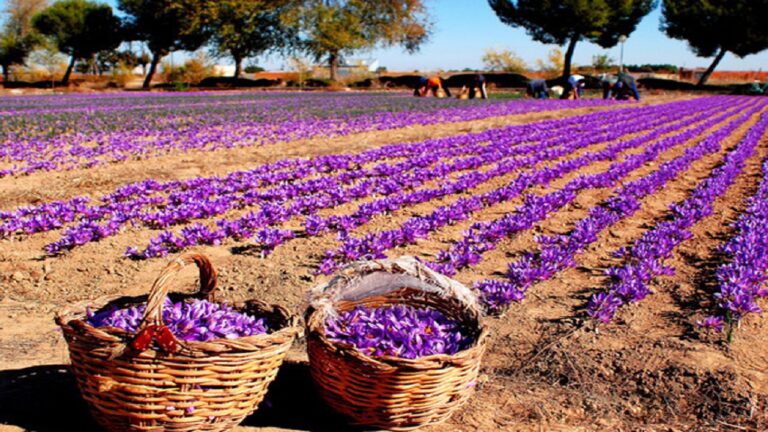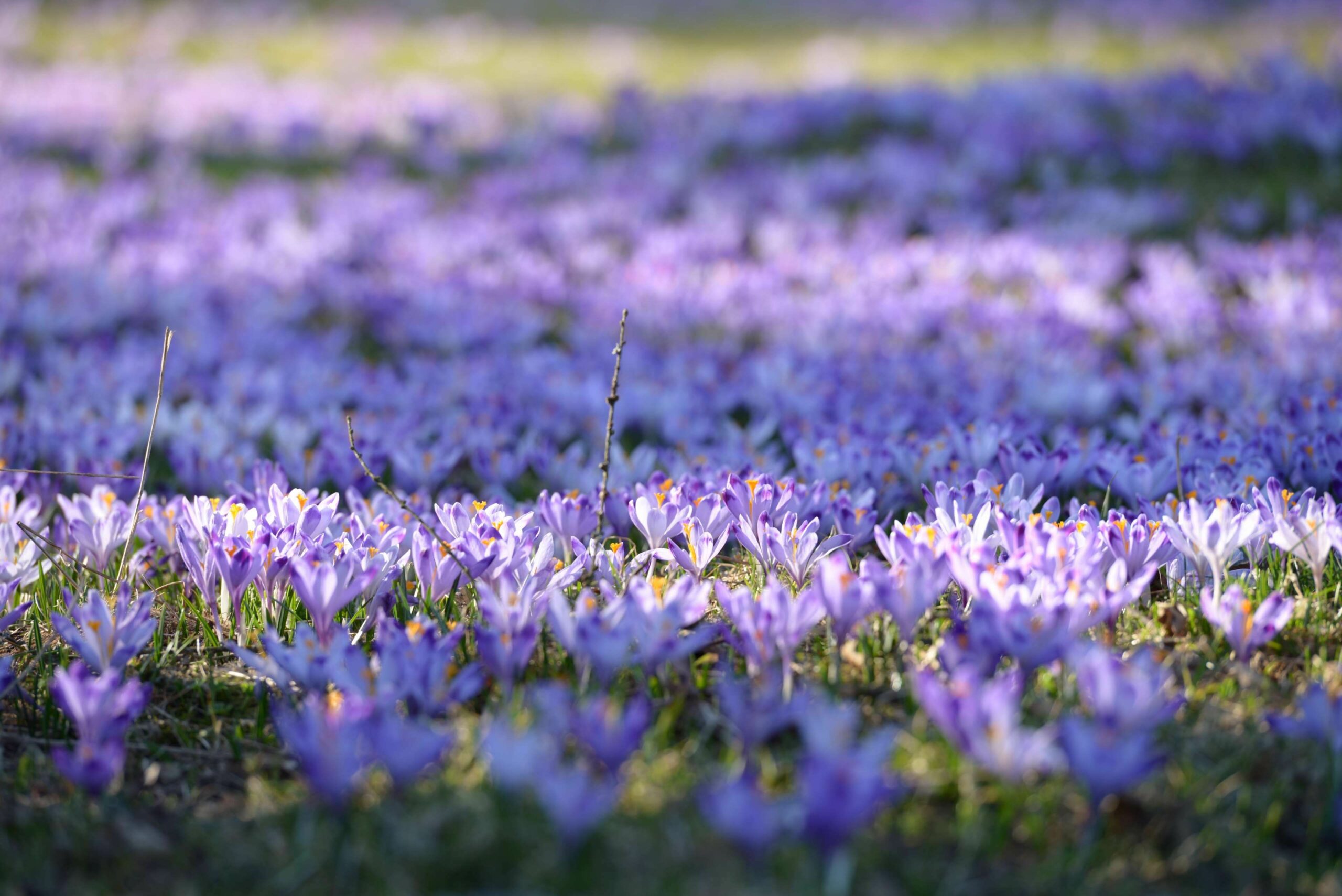Meaning
Etymology and Linguistic Roots
Saffron’s meaning and etymology are deeply intertwined with its historical significance as a valuable spice.
It derives from the Latin word *saffron*, which itself traces back to the Old French *safran* and ultimately the Persian word *zaferan*. This Persian origin is significant, as saffron was cultivated in Persia (modern-day Iran) for centuries before spreading to other parts of the world.
The name *zaferan* is believed to be composed of two elements: *za’faran* meaning “yellow” and “*ran*” indicating a plant or flower. This etymology accurately reflects saffron’s defining characteristic – its vibrant, golden-orange color derived from the stigmas of the Crocus sativus flower.
Over time, the word saffron has traversed linguistic boundaries, finding its way into various European languages with minor modifications in spelling and pronunciation. This widespread adoption underscores its enduring cultural and commercial importance throughout history.
Cultural Symbolism and Associations
The name Saffron holds a rich tapestry of meaning, cultural symbolism, and associations woven through its history.
Derived from the Latin word “crocus,” Saffron refers to the spice extracted from the flower’s stigmas, renowned for its vibrant color and aromatic properties. This connection to nature imbues the name with an inherent sense of beauty, rarity, and preciousness.
Historically, saffron has been highly valued across civilizations, symbolizing wealth, royalty, and luxury. Its use in ancient Egyptian mummification practices further elevates its symbolism, associating it with immortality and spiritual significance.
In medieval Europe, saffron played a crucial role in culinary traditions and medicinal remedies, solidifying its association with both nourishment and healing.
The name Saffron carries connotations of warmth, passion, and creativity. Its vibrant hue is often linked to feelings of joy, happiness, and enlightenment.
In literature and art, Saffron frequently symbolizes femininity, grace, and sensuality, reflecting its historical association with female deities and mythical figures.
Beyond its cultural symbolism, the name Saffron resonates with a sense of individuality and uniqueness. The spice itself is laboriously harvested, requiring meticulous attention to detail, much like the individual bearing the name.
Origin
Geographical Distribution and Cultivation History
The name “saffron” originates from the Arabic word _za’faran_, which itself derives from the Greek _krokos saffron_.
This root word refers to the flower from which the spice is derived: *Crocus sativus*, commonly known as the saffron crocus.
The saffron crocus, native to the eastern Mediterranean region, particularly Greece and Iran, has a long and rich history of cultivation spanning thousands of years.
Evidence suggests that saffron was first cultivated in ancient *Greece* around 300 BC.
From there, its use spread across the Mediterranean world, reaching *Egypt*, *Rome*, and eventually *India*.
The spice quickly became prized for its vibrant color, delicate aroma, and purported medicinal properties.
By the Middle Ages, saffron was one of the most expensive spices in the world, known as “red gold” due to its rarity and high value.
Today, the majority of saffron production occurs in *Iran*, followed by *India* and *Spain*.
Despite advancements in cultivation techniques, saffron remains labor-intensive and expensive to produce.
Its unique flavor profile and vivid color continue to make it a highly sought-after ingredient in both culinary and medicinal applications worldwide.
Historical Trade Routes and Economic Importance
Saffron, the world’s most expensive spice, derives its name from the Latin word “crocus,” referring to the flower from which it is derived.
The name likely evolved through various linguistic transformations over centuries.
Here’s a possible etymological breakdown:
- Latin: *crocus*
- Greek: *krokos*
- Old French: *saffran*, meaning “yellow”
- Middle English: *safron*
- Modern English: *saffron*
The saffron trade has a rich history, stretching back thousands of years.
Ancient civilizations recognized the spice’s value for both culinary and medicinal purposes.
- Ancient Greece and Rome: Saffron was highly prized in ancient Greece and Rome. It was used in religious ceremonies, perfumes, dyes, and as a flavoring agent.
- Silk Road: During the Middle Ages, saffron played a crucial role in trade along the Silk Road. It traveled from its origins in Persia and India to Europe, where it was a luxury commodity reserved for the wealthy.
- Medieval Europe: Saffron was extremely expensive in medieval Europe, even more valuable than gold at times.
The economic importance of saffron has remained significant throughout history.
It is still a highly sought-after spice, fetching exorbitant prices in the global market. Today, major saffron producing countries include Iran, India, and Spain. Saffron’s unique flavor profile and vibrant color make it a valuable ingredient in cuisines worldwide.
History
Ancient Usage and Medicinal Applications
The name “saffron” has a rich history, weaving its way through languages and cultures for millennia.
Its etymology traces back to the Latin word “safranum,” which itself likely originated from the Greek term “crocus.” This connection underscores saffron’s ancient origins, as it was cultivated in Greece as early as the 4th century BC.
The Greeks associated saffron with several goddesses, including Persephone and Aphrodite, symbolizing love, fertility, and even royalty. It held a prominent place in Greek mythology and was often used in religious ceremonies.
Saffron’s journey continued through time, finding its way into the Roman Empire where it was highly valued for both culinary and medicinal purposes. Romans used saffron extensively in their cuisine, particularly to color and flavor dishes, as well as in perfumes and cosmetics.
Throughout the Middle Ages, saffron remained a prized commodity, often referred to as “red gold” due to its scarcity and high cost. Its cultivation was primarily concentrated in regions like Spain, Italy, and Greece.
Saffron’s medicinal applications were deeply ingrained in ancient and medieval traditions. In Ayurvedic medicine (India), it was used to treat a range of ailments, including indigestion, insomnia, and respiratory problems.
Similarly, traditional Chinese medicine incorporated saffron for its warming properties, utilizing it to address issues like cold hands and feet, menstrual cramps, and depression.
Even today, saffron retains its status as a precious spice and continues to be explored for its potential therapeutic benefits in modern scientific research.
Medieval and Renaissance Era Popularity
Saffron’s story is deeply entwined with history, its vibrant hue adorning tapestries and coloring culinary traditions for millennia. The name “saffron” itself derives from the Arabic word “za’faran,” which traces back to the ancient Persian term “safran.”
This precious spice originates from the stigmas of the Crocus sativus flower, a delicate bloom native to the Mediterranean region. Its cultivation and trade date back to ancient civilizations like Egypt, Greece, and Rome.
During the Medieval era, saffron held immense value and prestige.
It was used not only as a culinary ingredient but also in dyes, medicines, and religious ceremonies.
The spice traveled along trade routes connecting Europe with the East, reaching its peak popularity during the Renaissance.
In this era of rediscovery and artistic flourish, saffron became synonymous with luxury and refinement.
It featured prominently in royal courts, adorning elaborate feasts and fueling the imaginations of artists like Leonardo da Vinci.
The high demand for saffron led to its cultivation spreading across Europe, particularly in regions such as Spain, Italy, and France.
However, its price remained exorbitantly high, reserved for the elite and wealthy.
Even today, saffron stands as one of the world’s most expensive spices, a testament to its enduring allure and historical significance.
Modern-Day Production and Consumption
Saffron, derived from the Greek word “krokos” meaning “saffron crocus,” has a rich history intertwined with its vibrant color, potent flavor, and remarkable properties.
Cultivation dates back thousands of years to ancient Mesopotamia and Egypt, where it was highly prized as a spice, dye, and medicinal herb. The Egyptians even used saffron in their embalming practices, believing it possessed rejuvenating qualities.
Ancient Greece revered saffron for its ability to enhance beauty and promote mental clarity. It played a significant role in religious ceremonies and was often associated with the goddess Aphrodite, symbolizing love and passion.
In Roman times, saffron was a luxury item sought after by the elite. Its extravagant price led to its use as a currency and a symbol of wealth and power. Romans believed it possessed medicinal properties and used it to treat ailments ranging from depression to insomnia.
During the Middle Ages, saffron’s importance continued in Europe, where it was highly valued for its culinary applications and medicinal uses. It became a key ingredient in European cuisines, particularly in Spain and Italy, where dishes like paella and risotto gained prominence.
Today, saffron remains one of the world’s most expensive spices. Its laborious harvesting process, requiring hand-picking individual stigmas from delicate crocus flowers, contributes to its high cost.
Modern production primarily occurs in countries such as Iran, Spain, India, and Greece. These regions boast ideal climates and fertile soils that support saffron cultivation.
Consumption patterns have evolved with the spice’s global appeal. Saffron is now used in a wide range of cuisines worldwide, from Middle Eastern and Mediterranean dishes to Asian stir-fries and European pastries. Its distinctive flavor and aroma add complexity and depth to culinary creations.
Beyond its gastronomic applications, saffron continues to be utilized for medicinal purposes in traditional medicine systems like Ayurveda and Traditional Chinese Medicine. Research is ongoing to explore its potential benefits for various health conditions.
- Best Datanyze Alternatives for 2025 - April 26, 2025
- Best Coldlytics Alternatives for 2025 - April 25, 2025
- Best Brevo Alternatives for 2025 - April 25, 2025


